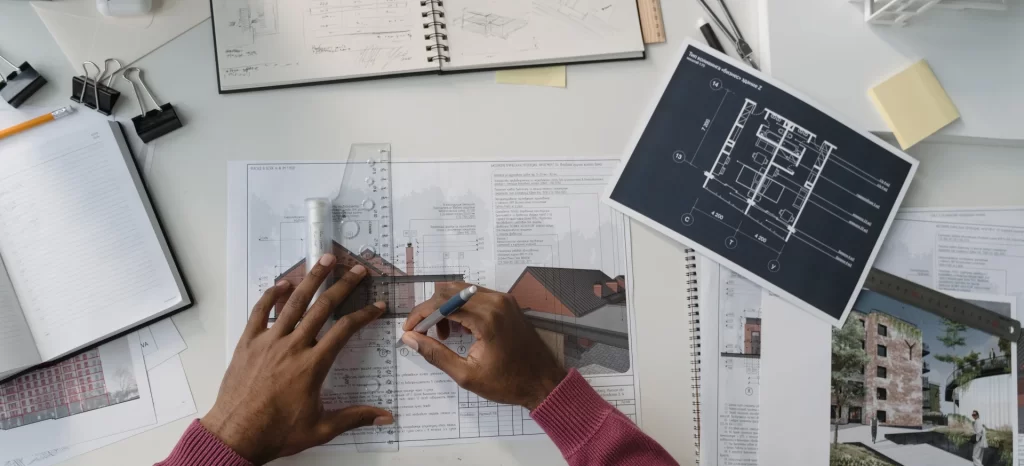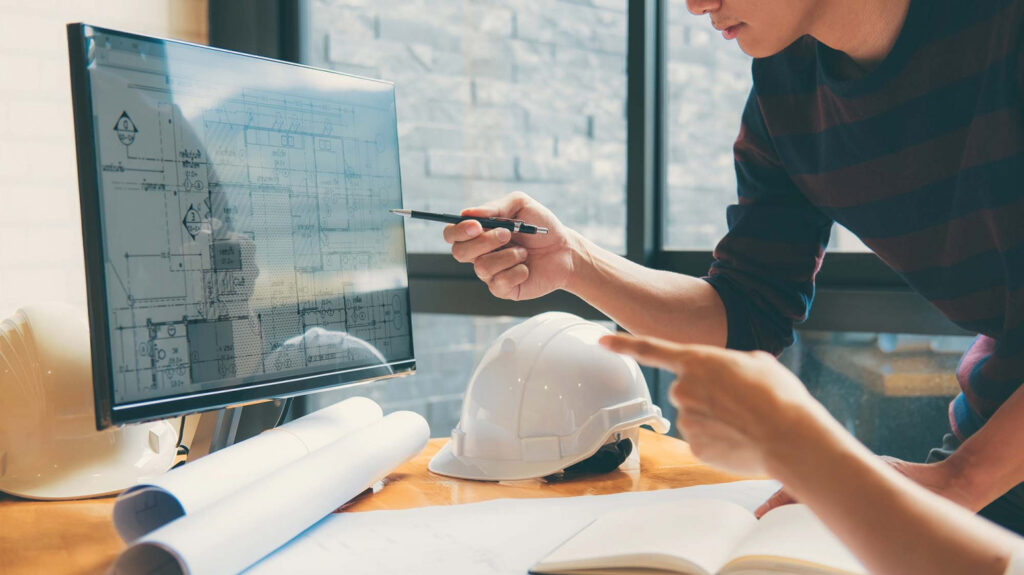7 Tips For Perfecting Your Structural Drafting Skills 2024
- November 24, 2023
No doubt that how essential structural drafting is for engineering and architecture! It plays an essential role in the successful execution of construction projects.
It is more than just important to perfect your structural drafting skills to cope with the competition. However, it may take quite an effort. Such as a combination of technical knowledge, attention to detail, and a commitment to continuous improvement.
If you ask us, we can help you in the journey. Today our 7 tips for perfecting your Structural Drafting Skills. We assure you our tips will help you not only to improve structural drafting skills, but you will also be able to produce high-quality, accurate drawings in no time.
7 Tips For Perfecting Your Structural Drafting Skills

Let’s cut the words, and get into the details. Here are our pro 7 tips for perfecting your structural drafting skills. Read serially.
1) Master the Basics:
Before you get into the tricky stuff in structural drafting skills, make sure you’ve got a good grasp of the basics. It’s like building a strong foundation for a house—you need it to be solid. Get familiar with the standard symbols, rules, and ways of drawing things that everyone in the industry uses.
The basics are the map that guides you through the drafting process. It might not seem super exciting, but it’s crucial. Think of it as learning the alphabet before you can write a whole story. The simple stuff lays the groundwork for the more complicated tasks.
The fundamental knowledge isn’t just about following the rules; it’s about making your drawings clear and consistent. Imagine reading a book where the letters and words keep changing—it would be confusing! The same goes for drawings. When you stick to the basics, you’re making sure your work speaks a language that everyone in the field can understand.
So, don’t rush into the complex tasks without nailing down the basics first. It’s like making sure your tools are in good shape before tackling a big project—it sets you up for success.
2) Stay Updated with Industry Standards:
Structural drafting is like a constantly changing puzzle. The rules and guidelines, called standards and codes, are always shifting. It’s important to keep your finger on the pulse of these changes. Stay updated on the latest news about how buildings should be designed and put together. This includes understanding the dos and don’ts laid out in building codes and regulations.
Why is this so crucial? Well, think of it as a roadmap. If you want to get from one place to another, you need to follow the right path. In the world of structural drafting, those paths are the standards and codes. They guide you on how to create drawings that not only look good but also follow the rules for safety and compliance.
What if you didn’t keep up with these changes? You might end up creating drawings that are like using an old map—leading you to the wrong destination. By staying informed about the latest updates in the field, you ensure your drawings are up-to-date and meet the current safety and compliance requirements. It’s like making sure you’re on the right road to success in the ever-changing landscape of structural drafting.
3) Utilize Advanced Software:

Make your structural drafting work easier and more accurate by using advanced software. These are like super-smart tools for drawing, and three popular ones are AutoCAD, Revit, and Tekla Structures. They come with cool features that make tricky tasks simpler, lower the chance of mistakes, and help you work faster.
It’s like having a superhero sidekick for your drawings. These software tools can do things like automatically fixing mistakes, creating 3D models, and even making sure everything follows the rules and standards. To be a top player in the drafting game, spend some time getting to know these tools. Learn all the tricks and shortcuts, so you can work smarter, not harder.
Investing time in mastering this software isn’t just about keeping up; it’s about staying ahead in the drafting world. It’s like having a special skill that sets you apart from the rest. So, embrace the power of technology, and let these software wizards be your partners in creating awesome, precise structural drawings.
4) Develop 3D Modeling Skills:
Adding 3D modeling to your drafting process is like giving your drawings a superpower. It goes beyond just putting lines on paper—it helps you see the structure in a way that’s almost like having it right in front of you. Think of it as creating a digital version of your project.
This isn’t just about making things look cool (though that’s a bonus). It’s about understanding the structure better. When you make a 3D model, you’re not just drawing lines; you’re building a virtual version of the real thing. This helps you visualize how everything fits together, like a puzzle coming to life on your computer screen.
Now, here’s the real magic: by doing this, you can catch problems before anyone even starts building. Imagine spotting an issue with the design or the way things connect before construction kicks off. That’s the power of 3D modeling—it lets you identify potential hiccups early on, saving time and avoiding headaches down the road. Learn more about Structural Drafting for Construction.
So, don’t just stop at the 2D drawings. Get hands-on with 3D modeling, dive into the digital realm, and watch how it boosts your understanding of the structure. It’s not just a cool trick; it’s a practical skill that improves your ability to communicate your ideas and create flawless drafts.
5) Pay Attention to Detail:

Being super precise is like having a superhero structural drafting skill. It means paying extra close attention to every little detail in your drawings. Imagine it like being a detective looking for clues—you don’t want to miss anything important!
When you’re working on your drawings, take the time to double-check everything. Look at the dimensions (those are like the sizes of things), check the annotations (which are like little notes on your drawings), and pay attention to all the small details. Why? Because even the tiniest mistake can turn into a big problem during construction.
Think of it this way: you are building a puzzle, and one piece is the wrong shape or size. The whole picture wouldn’t come together correctly. In structural drafting skills, your drawings are like puzzle pieces, and if they’re not spot on, it could cause a lot of headaches when it’s time to build.
So, don’t rush through it—take your time, be meticulous (which means being super careful and thorough), and make sure every detail is just right. This way, you’re setting yourself up for success in your projects.
6) The Process of Continuous Learning:
In the world of structural drafting skills, things are always changing. New ways of doing things and cool tools are popping up all the time. To stay on top of your game, you’ve got to be curious and ready to learn all the time.
One way to do this is by going to workshops, tuning into webinars, and hanging out at industry conferences. It’s like being at the front row of a concert, but instead of music, you’re soaking in all the latest and greatest info about drafting structures. You get to hear from experts, see what’s trending, and maybe even discover some new tricks.
And here’s the cool part – by networking with other professionals in the field, you’re not just learning from your computer screen. You’re making connections with real people who know their stuff. They might share tips, and stories, or even suggest tools that you haven’t tried yet.
So, being in this world where you’re always in the loop about what’s hot and what’s not in structural drafting skills. That’s what happens when you stay curious, keep learning, and connect with the pros. It’s like having your own backstage pass to the ever-evolving show of structural drafting skills.
7) Take Feedback Positively:
Getting feedback that helps you get better is super important. Imagine it as having a cool tool that makes you even more awesome at what you do. So, don’t keep your drafts to yourself—show them to your colleagues or mentors. Let them share their thoughts and ideas with you. It’s like having a team to help you see things from different angles and catch stuff you might have missed.
Now, about making mistakes—it happens to everyone. But here’s the thing: those mistakes are like puzzle pieces that help you build your skills. When you find errors in your drawings, don’t get upset. Instead, take a closer look and figure out what caused the mistake. Was it a mix-up in the plans, a math goof, or something else?
The cool part is that these moments are like golden opportunities for you to grow. By understanding what went wrong, you’re not just fixing that one mistake; you’re leveling up your skills overall. So, don’t be scared of making mistakes—think of them as chances to become an even better structural drafter.
Conclusion:
Perfecting your structural drafting skills requires a combination of foundational knowledge, technological proficiency, and a commitment to continuous improvement.
By mastering the basics, staying updated with industry standards, utilizing advanced software, developing 3D modeling skills, paying attention to detail, embracing continuous learning, and seeking feedback, you can improve your abilities and contribute to the success of your construction projects.
